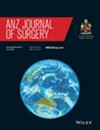Comparative Outcomes of Direct Versus Mesh Repair and Timing of Repair for Traumatic Abdominal Wall Hernias: A Systematic Review and Meta-Analysis
Abstract
Introduction
Traumatic abdominal wall hernia (TAWH) refers to the disruption of the muscular layers of the abdominal wall following blunt traumatic injury. There is a lack of consensus in the management of TAWH, particularly when trauma laparotomy for concurrent visceral injury is required. This systematic review and meta-analysis aims to evaluate recurrence outcomes with repair technique (mesh vs. direct suture repair) and timing of repair (acute vs. elective) with and without trauma laparotomy.
Methodology
A comprehensive search was conducted on Medline, Embase, and Cochrane central databases. Keywords related to traumatic abdominal wall hernia, acute and elective treatment, and timing of repair were used to identify relevant articles.
Results
A total of 26 studies involving 432 patients were included. There was reduced recurrence with mesh compared to direct suture repair in patients with TAWH who did not require trauma laparotomy (OR 0.20, 95% CI 0.05–0.82, p = 0.02), although there was no difference in recurrence between acute versus elective repair in this cohort. There was no difference between mesh and direct suture repair for the management of TAWH in patients requiring trauma laparotomy.
Conclusion
This systematic review and meta-analysis identified evidence of reduced recurrence with mesh compared to direct suture repair for a patient with TAWH who did not require trauma laparotomy. There was insufficient evidence of superiority for mesh compared to direct suture repair in trauma laparotomy settings, nor timing of repair in non-trauma laparotomy settings. The strength of the conclusions is limited by the risk of bias in included studies and their heterogeneity.


 求助内容:
求助内容: 应助结果提醒方式:
应助结果提醒方式:


